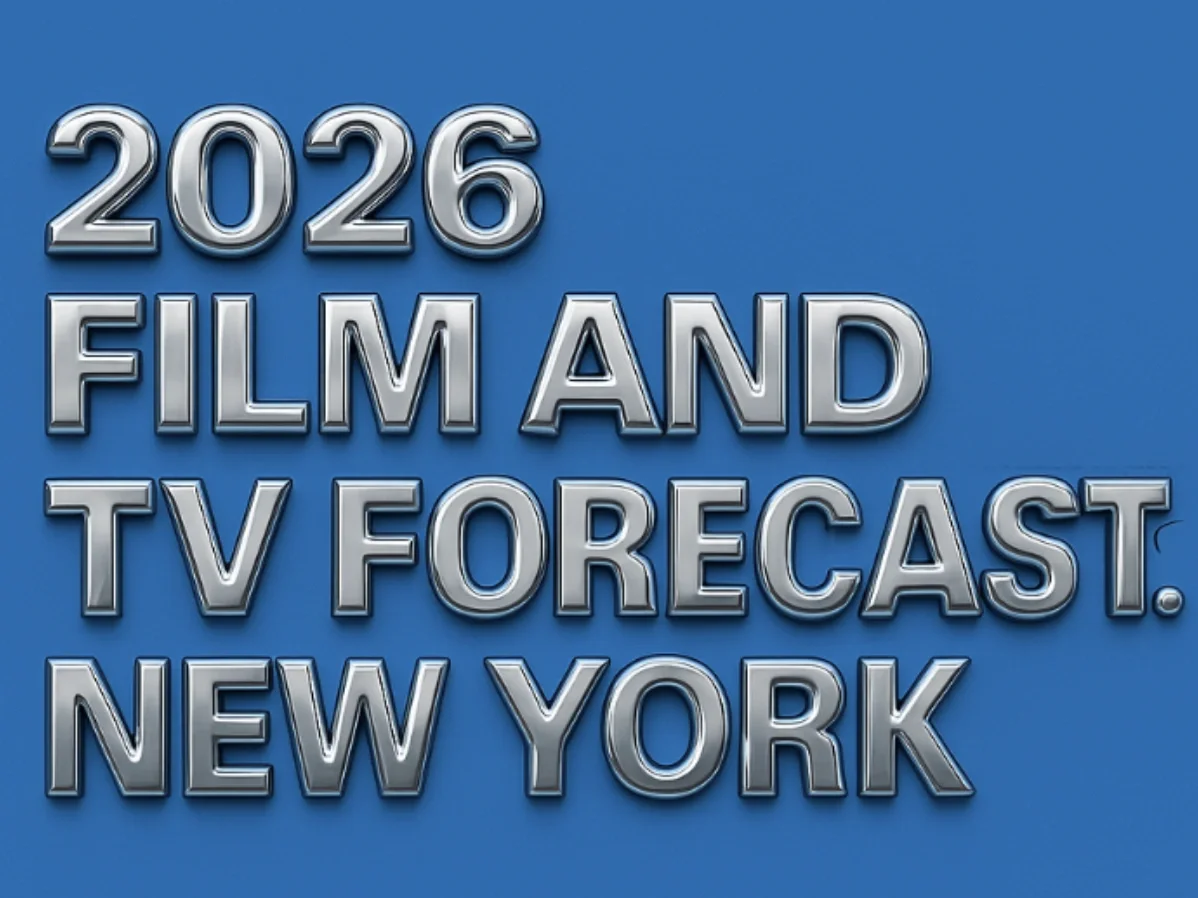2026 Film and TV Forecast: New York
1. Favorable Incentives and State Support
New York is expanding its Film and Television Tax Credit Program to attract more productions to the state. The program now offers base incentives of around 30 percent on qualified expenditures and up to 40 percent under certain conditions.
The expansion includes upstate and nonmetropolitan zones, encouraging productions beyond New York City. This makes New York more competitive with other leading production centers such as Georgia and Louisiana.
Outlook for 2026:
On-location and studio production are expected to grow steadily. With stronger incentives in place, projects that had migrated to other states are likely to return, bringing jobs and spending back to New York.
2. Infrastructure and Studio Capacity Growth
A major development is Wildflower Studios in Astoria, Queens. The Robert De Niro backed complex includes 11 vertically arranged sound stages with built-in postproduction and office space. This design allows large-scale productions to thrive in space-limited urban environments.
Outlook:
Producers, LED wall specialists, and support service providers should position themselves near these new studio hubs to take advantage of growth in the New York production market.
3. Recovery and Growth in Production Volume
After a challenging 2024 due to strikes and lingering pandemic effects, 2025 saw a measurable recovery. Filming and production spending were up between 5 and 8 percent from 2024 levels.
Nationally, total production spending approached 40 billion dollars by the end of 2025, close to pre-strike numbers. New York remains among the top three production centers in the United States, just behind California and Georgia.
Forecast for 2026:
Production activity in New York is projected to grow by 5 to 12 percent depending on how quickly incentive-driven deals convert into active productions.
4. Content Strategy, Platforms, and Monetization Trends
The global entertainment and media industry is expected to grow at about 3.7 percent annually through 2029.
Streaming platforms will continue to dominate consumer behavior, while traditional broadcast television will keep declining. Advertising-supported streaming models are becoming more common as services search for sustainable profits.
Large media companies are expected to consolidate or form partnerships to simplify the streaming landscape and strengthen control over distribution.
Outlook for New York Producers:
The demand for high-quality, flexible content will increase. Producers who can deliver engaging stories that perform on both subscription and ad-supported platforms will have a competitive advantage.
5. Technology and Production Innovation
Virtual production using LED walls, real-time motion tracking, and Unreal Engine technology is becoming mainstream. Costs are falling and the workflow is becoming more efficient.
Artificial intelligence tools are being integrated into previsualization, editing, localization, and even creative development. Producers are learning to combine artistry with technology to achieve faster and more versatile output.
Synthetic avatars, generative video, and multilingual AI voices are finding a place in commercial, corporate, and training content.
Opportunity:
Companies that invest in virtual production facilities, AI-driven workflows, and hybrid pipelines will gain a strong competitive edge. New York’s mix of talent and technology makes it an ideal base for innovation.
6. Risks and Challenges
Other states and countries continue to enhance their own incentive programs, which could draw productions away from New York.
Inflation, higher labor costs, and increased financing costs may constrain budgets and slow down high-end productions.
Complex permitting, labor regulations, and limited parking or access in New York City can delay shoots or increase costs.
If global streaming consolidation stalls or consumer spending weakens, production demand may flatten temporarily.
7. Strategic Actions for 2026
Align production budgets with state incentives. Build local hiring and spending into every project to qualify for maximum credits.
Collaborate with new facilities. Partner with Wildflower Studios and other emerging complexes to secure soundstage access.
Adopt new production pipelines. Incorporate virtual production, AI-assisted editing, and remote collaboration tools to reduce costs and increase speed.
Create flexible distribution strategies. Design content that works across streaming, broadcast, corporate, and live platforms.
Develop early. Secure projects and funding before incentive caps or annual limits are reached.
Expand supporting services. Equipment rental, LED wall management, postproduction, and live-streaming support will all see higher demand.
Conclusion
New York is entering 2026 with renewed momentum. Expanded incentives, new production infrastructure, and advancing technology make the state one of the strongest and most resilient centers for film and television production in the world.
Studios, producers, and investors who align early with these trends will be well positioned to capitalize on the state’s creative and financial opportunities.

